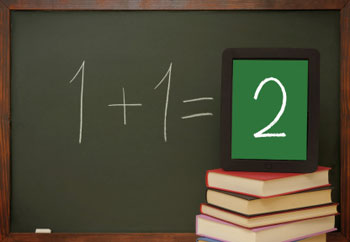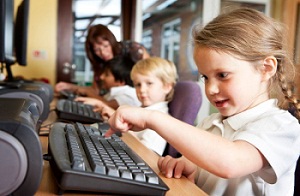Math Games to Help Kids Understand Capacity
In math, capacity refers to how much liquid or how many items a container can hold. As adults, we consider capacity as part of our everyday lives, whether it's filling up our gas tanks or pouring milk into a cereal bowl. However, if your child is just beginning his or her study of capacity, it can be challenging. Below are some engaging activities to help your child understand the concept.

How to Make Capacity Fun
Children typically start their study of capacity in third grade, beginning with volume, as a precursor to later geometry studies in area and volume. If your child is just beginning to learn about capacity, it may be difficult for him or her to comprehend how a tall, skinny container can hold the same amount of liquid as a short, squat one. Luckily, the study of capacity lends itself well to hands-on activities, which can help your child gain a better grasp of the subject.
You can help make capacity fun for your child by giving him or her the opportunity to interact with a variety of measuring tools, such as cups, bowls and even tablespoons and teaspoons. Remember that real-life situations, such as cooking, can be valuable opportunities for your child to actively use capacity. It can be especially fun if you participate in capacity activities with your child.
Capacity Activities
1. When you and your child visit an office that has a container filled with candy, encourage him or her to guess how many pieces of candy there are in the container. This can help your child think about capacity and volume as it exists in the real world.
2. At the store, note to your child that milk is sold in a variety of volumes. Engage your child by asking him or her to compare the sizes of various milk containers.
3. When cooking, you can help your child understand capacity by asking him or her to measure ingredients. For instance, your child can learn through hands-on experience that two 1/4 cups have the same capacity as one 1/2 cup.
4. Measure out the same amount of an item or liquid, such as water, dried beans or cereal, into two or more different sized containers. Next, ask your child to hypothesize about which container holds the most. Your child can them use measuring tools to check his or her hypothesis.
You could vary this activity by giving your child a pre-measured amount of liquid. Then, have him or her guess how high the liquid will reach on each of a variety of different sized containers. For instance, if you have a thin, tall glass, the liquid will reach higher than it would in a large bowl.
Other Articles You May Be Interested In
-
MIND Games Lead to Math Gains

Imagine a math teaching tool so effective that it need only be employed twice per week for less than an hour to result in huge proficiency gains. Impossible, you say? Not so...and MIND Research Institute has the virtual penguin to prove it.
-
5 Free and Fun Math Games for Kids

Looking for a way to get your child engaged with math? There are many free, fun math games online that explore basic concepts such as addition, subtraction, multiplication and division, as well as more advanced games that offer practice with decimals and fractions. Read on to discover five of our favorite educational - and fun! -...
We Found 7 Tutors You Might Be Interested In
Huntington Learning

- What Huntington Learning offers:
- Online and in-center tutoring
- One on one tutoring
- Every Huntington tutor is certified and trained extensively on the most effective teaching methods
K12

- What K12 offers:
- Online tutoring
- Has a strong and effective partnership with public and private schools
- AdvancED-accredited corporation meeting the highest standards of educational management
Kaplan Kids

- What Kaplan Kids offers:
- Online tutoring
- Customized learning plans
- Real-Time Progress Reports track your child's progress
Kumon

- What Kumon offers:
- In-center tutoring
- Individualized programs for your child
- Helps your child develop the skills and study habits needed to improve their academic performance
Sylvan Learning

- What Sylvan Learning offers:
- Online and in-center tutoring
- Sylvan tutors are certified teachers who provide personalized instruction
- Regular assessment and progress reports
Tutor Doctor

- What Tutor Doctor offers:
- In-Home tutoring
- One on one attention by the tutor
- Develops personlized programs by working with your child's existing homework
TutorVista

- What TutorVista offers:
- Online tutoring
- Student works one-on-one with a professional tutor
- Using the virtual whiteboard workspace to share problems, solutions and explanations